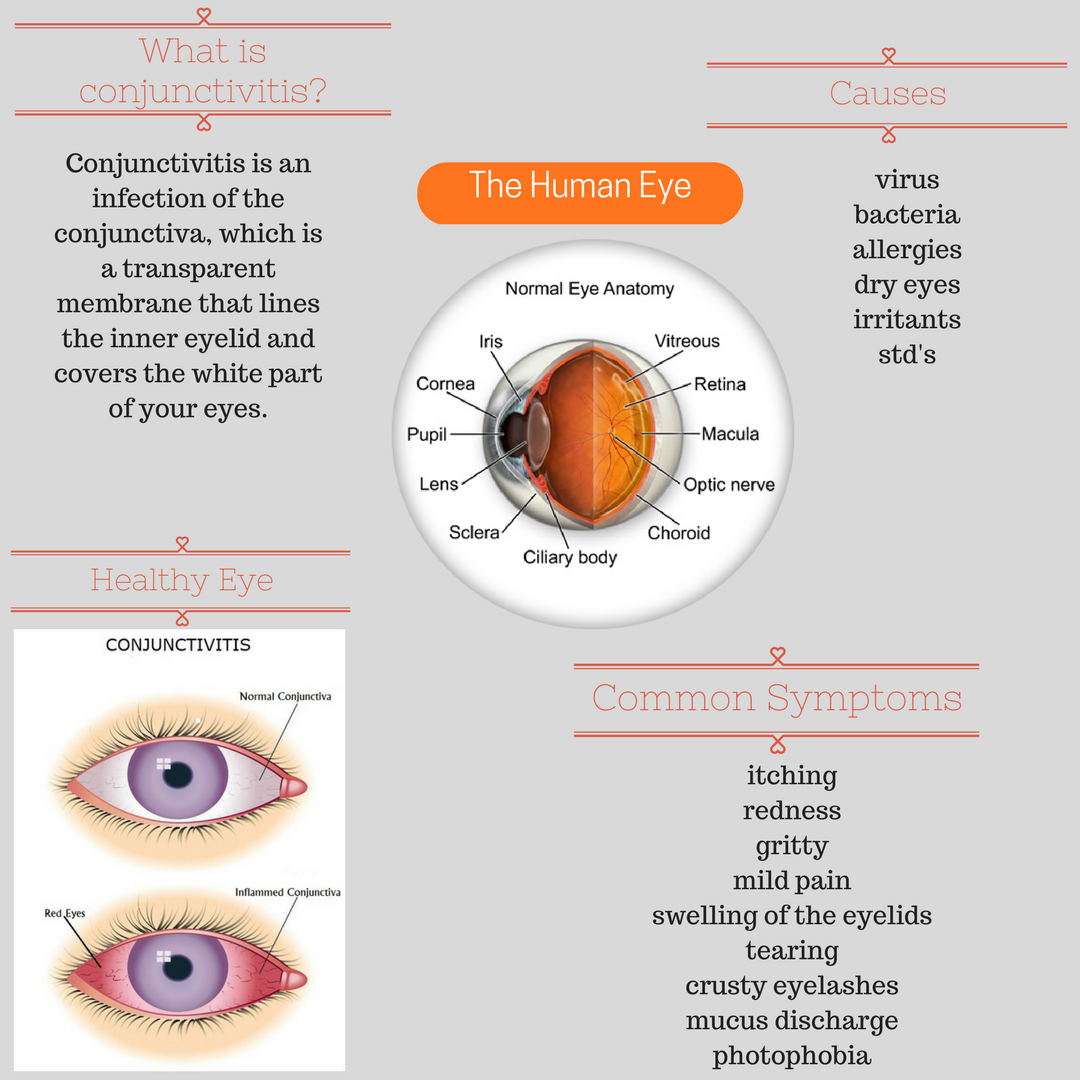How to treat swollen eyelid allergy. Comprehensive Guide to Swollen Eyelid Allergy: Inflammation, Infections, Causes, and Treatment
What causes a swollen eyelid? Explore the various reasons behind eyelid swelling, including allergies, styes, chalazia, blepharitis, conjunctivitis, and more. Learn effective home remedies and when to seek medical attention.
Unraveling the Causes of Swollen Eyelids
Waking up to a swollen eyelid can be a concerning experience, leaving you wondering what could be the underlying cause. From allergic reactions to bacterial infections, there are several factors that can contribute to this condition. In this comprehensive guide, we’ll dive deep into the common reasons behind swollen eyelids and provide insights on effective management strategies.
Allergies: The Culprit Behind Eyelid Swelling
One of the most common causes of swollen eyelids is allergies. When your immune system mistakenly identifies harmless substances like pollen, dust, or animal dander as threats, it releases chemicals called histamines to combat them. This process can lead to inflammation and swelling in the eyelids, accompanied by other allergy symptoms such as a runny nose, nasal congestion, and itchy, watery eyes.

Styes: Painful Red Bumps on the Eyelid
A stye, also known as a hordeolum, is a painful red bump that develops at the base of the eyelid or in the eyelash follicle. This condition is caused by an infection in the oil gland or hair follicle, leading to swelling and inflammation in the affected area. In some cases, the swelling can spread to the entire eyelid, making it appear significantly puffy.
Chalazia: Clogged Oil Glands and Swelling
Similar to a stye, a chalazion is a result of a clogged oil gland in the eyelid. This can cause a red, swollen bump to form, which may or may not be painful. While a chalazion is not usually painful, it can become infected and lead to a more severe swelling of the eyelid.
Blepharitis: Inflamed Eyelid Glands
Blepharitis is a common condition that causes inflammation of the eyelid glands. This can lead to a variety of symptoms, including swollen, watery, and irritated eyelids, as well as a feeling of having something stuck in the eye. Individuals with certain underlying conditions, such as allergies, oily skin, rosacea, or dandruff, may be more susceptible to developing blepharitis.

Conjunctivitis: Inflammation of the Conjunctiva
Commonly known as “pink eye,” conjunctivitis is an inflammation of the conjunctiva, the thin layer of tissue that lines the inside of the eyelids and covers the white part of the eye. This condition can be caused by a viral or bacterial infection, and it can also be associated with allergies, particularly in contact lens wearers who develop a condition called giant papillary conjunctivitis.
Graves’ Eye Disease: A Thyroid-Related Condition
Eyelid swelling can also be a symptom of Graves’ eye disease, an autoimmune condition that affects the thyroid gland. Approximately 50% of individuals with Graves’ disease experience eye-related complications, including eyelid swelling, bulging eyes, dry or watery eyes, double vision, and light sensitivity.
Cellulitis: A Serious Bacterial Infection
Cellulitis is a bacterial infection that can affect the eyelids or the tissues around the eyes. This serious condition requires prompt medical attention, as it can potentially lead to vision loss, meningitis, or a brain abscess if left untreated. Symptoms of cellulitis include swelling, eye pain, bulging eyes, difficulty moving the eyes, and vision changes.
:max_bytes(150000):strip_icc()/chalazion-vs-stye-5197580-FINAL-5192daf695a940e8acea08c776bb62c3.jpg)
Home Remedies and When to Seek Professional Help
In many cases, swollen eyelids can be effectively managed with simple home treatments. Applying warm or cold compresses, taking a break from contact lenses, and using over-the-counter medications can provide relief. However, it’s important to seek medical attention if the swelling is accompanied by severe symptoms, such as eye pain, fever, vision changes, or if the condition does not improve within a few days.
By understanding the various causes of swollen eyelids, you can take the necessary steps to address the underlying issue and find the most suitable treatment. Remember, prompt medical attention is crucial, especially in cases of severe or persistent swelling, to prevent potential complications and ensure a speedy recovery.
Reasons Why Your Eyelid is Swollen | Optometrist in Newton, NC
What Causes a Swollen Eyelid?
Looking in the mirror first thing in the morning can be a shocking experience when you have a swollen eyelid. Whether you have a small bump or your eyelid is completely swollen, you’re probably wondering what caused the swelling. These conditions are often to blame for swollen eyelids:
Allergies
Allergies might be the reason for the swelling in your eyelids. Allergic reactions occur when your immune system gets a little confused and begins to attack pollen, ragweed, animal dander, dust, and other harmless substances. Your body tries to get rid of these substances by releasing chemicals called histamines. Unfortunately, the release of histamines triggers inflammation and swelling, which is the reason that your nose runs or your eyelids look puffy. If you have a runny nose, nasal congestion, and itchy, watery eyes in addition to eyelid swelling, allergies could be the reason for the change in your appearance.
Stye
A painful red bump at the base of your eyelid could be caused by a stye. Styles happen when you have an infection in an oil gland at the base of your eyelid or in the follicle (sac) that holds your eyelash. In some cases, the inflammation from the infection can cause swelling in your entire eyelid. Other stye symptoms can include watery eyes, light sensitivity, crusty eyelids, or a feeling that something is stuck in your eye.
Chalazion
A chalazion can also cause a red bump or swollen eyelid. The bump appears when an oil gland in your eyelid becomes clogged. A chalazion isn’t usually painful but may feel sore if it becomes infected.
Blepharitis
Blepharitis is a common cause of eyelid swelling. If you have blepharitis, you may notice that your eyes are watery and sting or burn. Other symptoms may include:
- Sensitivity to light
- Dry eyes
- Itching
- The feeling that something is stuck in your eye
- Crusty or flaky eyelids
The condition occurs when the oil glands in your eyelid become inflamed. You may be more likely to develop blepharitis if you have allergies, oily skin, rosacea, or dandruff, according to the National Eye Institute.
You may be more likely to develop blepharitis if you have allergies, oily skin, rosacea, or dandruff, according to the National Eye Institute.
Conjunctivitis
Commonly called “pink eye,” conjunctivitis causes inflammation in the conjunctiva, the layer of tissue that lines the insides of your eyelids and covers the whites of your eyes. Conjunctivitis can be caused by a virus or bacteria. If you wear contact lenses, your swollen eyelid may be due to giant papillary conjunctivitis. This condition causes bumps under your eyelids due to allergies to contact lenses, solutions, or protein deposits. Contact lens wearers who also have allergies or asthma are more likely to develop giant papillary conjunctivitis, according to the American Academy of Ophthalmology.
Graves’ Eye Disease
Eyelid swelling might be related to Graves’ eye disease. The eye disease affects about 50 percent of people who have Grave’s disease, an autoimmune condition caused by an overactive thyroid gland, according to the American Thyroid Association. Other symptoms of Graves’ eye disease may include bulging eyes, dry or watery eyes, double vision, light sensitivity, or a feeling that something is stuck in your eye.
Other symptoms of Graves’ eye disease may include bulging eyes, dry or watery eyes, double vision, light sensitivity, or a feeling that something is stuck in your eye.
Cellulitis
This bacterial infection can affect the eyelids or the tissues around the eyes. Cellulitis is a serious infection that can cause vision loss, meningitis, or a brain abscess if not treated promptly. If you have cellulitis, you may experience swelling, eye pain, bulging eyes, difficulty moving your eyes, or vision changes.
What to Do If You Have a Swollen Eyelid
Luckily, most swollen eyelids soon get better with a little home treatment. Depending on the cause of the swelling, one of these suggestions may be helpful.
- Use Compresses. Use a warm compress to open clogged oil glands, or try a cold compress to decrease inflammation, swelling, and relieve allergy symptoms. Place a washcloth under warm or cool water, wring out excess water, and put the cloth on your eyelid for 10 to 15 minutes.
 Compresses can be used throughout the day to improve your symptoms.
Compresses can be used throughout the day to improve your symptoms. - Take Out Your Contact Lenses. It’s always a good idea to wear your glasses if your eyes are red, painful, or swollen. Keeping your contacts out for a few days may help inflammation subside and relieve swelling.
- See Your Optometrist. Call your eye doctor if eyelid swelling is accompanied by eye pain, trouble moving your eye, fever, discharge, vision changes, or if your eye doesn’t improve after a few days of home treatment.
Worried about a swollen eyelid? Give our office a call.
Sources:
American Academy of Ophthalmology: Giant Papillary Conjunctivitis, 5/18/2021
WebMD: Swollen Eyelid, 4/16/2020
All About Vision: Swollen Eyelid Causes & How to Treat a Swollen Eyelid, 7/2021
American Academy of Ophthalmology: What Are Styes and Chalazia?, 11/18/2021
National Eye Institute: Blepharitis, 8/13/2020
American Thyroid Association: Graves’ Eye Disease
Eyelid problems – NHS
Find out what to do if you have a lump on your eyelid, or an eyelid that’s swollen, sticky, itchy or painful.
Most eyelid problems are harmless
Many eyelid problems are not serious.
It’s fairly common to have any of these problems:
- a lump that goes away by itself after 3 or 4 weeks
- mildly itchy, flaky or sticky eyelids that clear up by themselves
- swelling from a nearby insect bite, injury or operation that goes away after a week or so
- twitching or blinking from time to time – often when you’re tired
- eyelids that droop (or get more “hooded”) as you get older
Types of eyelid problems
Your symptoms might give you an idea of what’s causing your eyelid problem. But do not self-diagnose – see a GP if you’re worried.
| Eyelid problem | Possible cause |
|---|---|
| Lump or swelling on eyelid | Stye or chalazion |
| Itchy, flaky, sticky or swollen eyelid | Allergy, blepharitis or conjunctivitis |
| Yellow lump or patch on eyelid | Xanthelasma (yellow patches sometimes caused by high cholesterol) |
| Eyelid turning outwards or inwards | Ectropion or entropion |
| Hot, painful and swollen eyelid | Cellulitis |
Information:
There is separate information about twitching eyelids.
A pharmacist can help with eyelid problems
You can ask a pharmacist about:
- what you can do to treat common eyelid problems yourself
- if you can buy anything to help – for example, cleaning solutions for sticky eyelids
- if you need to see an optician or GP
Non-urgent advice: See a GP if:
- you’re worried about an eyelid problem
- your symptoms are getting worse or lasting a long time
- your eyelid is painful or you’re in a lot of discomfort
- you have yellow lumps or patches around your eyes
Urgent advice: Ask for an urgent GP appointment or get help from NHS 111 if:
- your swollen eyelid is red, hot, painful, tender or blistered
- your eyelid droops suddenly
- the pain is in your eye (not your eyelid)
- the white of your eye is very red, in part or all over
- you’re sensitive to light (photophobia)
- your eyesight changes – for example, you see wavy lines or flashing
- you have a very high temperature, or feel hot and shivery, or you feel generally unwell
- you think it’s an allergic reaction
You can call 111 or get help from 111 online.
Page last reviewed: 02 October 2020
Next review due: 02 October 2023
causes, diagnosis and treatment
Conjunctival edema: causes
The mucous membrane of the eyes or the conjunctiva is constantly exposed to external factors. If the inflammatory process is not diagnosed in time, then edema may begin, disrupting the functionality of the visual system. Edema of the conjunctiva of the eyeball or chemosis – most often can be observed with barley eyelids (acute purulent inflammation), panophthalmitis (purulent inflammation of all tissues of the eyeball), malignant exophthalmos (“protrusion” forward of the eyeball) and other tumors, allergic reactions to medications. It may be limited or completely cover the conjunctiva of the eyeball.
The causes of conjunctival edema can be acute and local. Among the most common causes, there are: acute inflammation of the accessory eye apparatus and the membranes of the eye, insect bites, the appearance of barley on the eye, orbital cellulitis (inflammation of the eye tissues behind the orbital septum), gonorrheal conjunctivitis (a pathology that is dangerous for vision that develops with gonorrhea), impaired microcirculation or blood stasis, which can be caused by exposure to or pressure on the eye by tumors in the orbital regions (the area around the eyeball). Often, with swelling of the conjunctiva, anemia (anemia), nephritis (inflammation that leads to a change in paired organs), urticaria (skin disease, mainly of allergic origin) is diagnosed.
Often, with swelling of the conjunctiva, anemia (anemia), nephritis (inflammation that leads to a change in paired organs), urticaria (skin disease, mainly of allergic origin) is diagnosed.
The causes of the disease can be eye pathologies, craniocerebral injuries, uncontrolled use of medications.
Main types of conjunctival edema
There is a classification of chemosis into: allergic, infectious and inflammatory .
The allergic form of the disease can manifest itself with self-medication, uncontrolled use of eye drops, or contact with chemicals in the eye. It is manifested by an acute condition, inflammation of the bulbar conjunctiva (anterior surface of the eye), located on the eyeball. If treatment is not started on time, the disease can spread to the conjunctiva of the eyelids and affect both eyes. In this case, there is a burning sensation, itching, pain, pain, lacrimation, sensation of a foreign body. It is difficult for the patient to close his eyes or blink.
Infectious purulent inflammation occurs when an abscess forms in different parts of the eyelid, for example, barley, as well as inflammation of the edges of the eyelids. The cause of the appearance of inflammatory chemosis can also be the defeat of the sebaceous glands by mites of the genus Demodex.
Inflammation of the conjunctiva may accompany a systematic or acute illness. Chemosis is diagnosed in pathologies of the brain, blood vessels, venous blood stasis, endocrine diseases, tumors, displacement of the eyeball, exophthalmos, skin tuberculosis. For diagnosis and treatment, we recommend that you contact a therapist, a neuropathologist, as soon as possible, who will prescribe a consultation with an ophthalmologist, who decides on the choice of prescribing treatment methods.
Diagnosis and treatment of chemosis
The method of treatment depends on the nature of the disease. In case of allergic reactions, vasoconstrictor and antihistamine drugs are used, viral chemoses are treated with antiviral drugs, antibiotics are prescribed in case of damage to the mucous membrane of the eyes by fungal pathogens. The dosage and combination of medications is determined by the attending physician after a thorough examination. In severe forms of the disease, for example, orbital tumors, exophthalmos, surgery may be required.
The dosage and combination of medications is determined by the attending physician after a thorough examination. In severe forms of the disease, for example, orbital tumors, exophthalmos, surgery may be required.
If the edema of the conjunctiva is not eliminated in time, then purulent and inflammatory processes can spread to the cornea of the eye, which does not have external protection and does not have regenerative mechanisms. This can lead to inflammation of the cornea or keratitis, up to complete loss of vision.
Even with mild swelling of the mucous membrane, pain in the eye, pain, burning, we recommend that you contact your doctor as soon as possible for examination and treatment.
To diagnose the disease, a comprehensive ophthalmological examination is prescribed, which is carried out in the Eye Clinic of Dr. Belikova by experienced doctors of the highest and first category, Ph.D., as well as personally Ph.D., Professor Elena Ivanovna Belikova.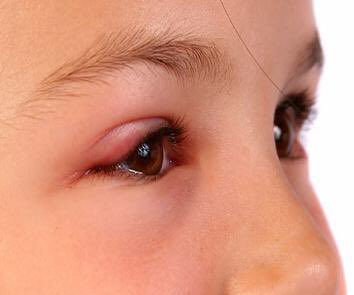 Health is in your hands, come and we will diagnose and help you solve the problem.
Health is in your hands, come and we will diagnose and help you solve the problem.
causes and effective treatments
Contents
- 1 Swollen eyelid: causes, symptoms and treatments
- 1.1 Swollen eyelids: causes and treatment
- 1.2 Swollen eyelids: concept and causes
- 1.3 Why do swollen eyelids occur?
- 1.4 Eyelid swollen emergency care
- 1.5 What is the diagnosis of eyelid swelling
- 1.6 Effective treatments for a swollen eyelid
- 1.7 Minimally invasive methods for dealing with a swollen eyelid
- 1.8 La granular correction of a swollen eyelid
- 1.9 Other non-surgical treatments swollen eyelid
- 1.10 Surgical treatment of swollen eyelid
- 1.11 Postoperative period
- 1.11.1 General recommendations
- 1.11.2 Analgesia
- 1.11.3 Nutrition
- 1.12 Eyelid care recommendations 90 042
- 1.13 Related videos:
- 1.14 Q&A:
- 1.
 14.0.1 What are the causes of a swollen eyelid?
14.0.1 What are the causes of a swollen eyelid? - 1.14.0.2 How to treat a swollen eyelid?
- 1.14.0.3 Can a swollen eyelid be prevented?
- 1.14.0.4 What are the quick fixes for a swollen eyelid?
- 1.14.0.5 How long can a swollen eyelid last?
- 1.14.0.6 Can a swollen eyelid be a sign of any disease?
- 1.
Find out what causes a swollen eyelid and how to deal with it. Tips and tricks from eye and eye skin care experts to combat puffiness and eliminate puffiness options.
Swollen eyelid is a common condition that can manifest itself in varying degrees of severity. It can be caused by many reasons, both genetic and acquired. Often, this disease can lead to discomfort and reduced quality of life, especially if it causes cosmetic defects or visual impairment.
If you have a swollen eyelid, you may be interested in knowing the causes that may be related to your condition and ways to alleviate the condition.
In this article, we will discuss several common causes of swollen eyelids and how to treat them. We will also look at what can be done to prevent the appearance of tumors in the eye area.
Swollen eyelids: causes and treatment
Swollen eyelids is a serious problem that can lead to poor vision and appearance. There are several reasons why the eyelids may be swollen and it is important to identify them correctly in order to prescribe the appropriate treatment.
- Allergic reaction . One of the most common causes of swollen eyelids is an allergic reaction. This reaction can be caused not only by food, but also by cosmetics and drugs.
- Eye diseases . Eye conditions such as conjunctivitis and dacryocystitis can lead to swollen eyelids.
- Fatigue and stress . Excessive fatigue and stress can cause puffy eyelids, especially in the morning after a lack of sleep.

Treatment for swollen eyelids depends on the cause and may include the following steps:
- Removal of the allergen. If the cause of swollen eyelids is an allergic reaction, then the allergen must be identified and eliminated. In an acute allergic reaction, the use of antihistamines and ointments may be prescribed.
- Use of anti-inflammatory drugs . If the swelling is caused by an eye disease or infection, the doctor may prescribe treatment with anti-inflammatory ointments or drops.
- Use of folk remedies . Some home remedies, such as green tea or cucumber compresses, can help reduce eyelid swelling.
In any case, to determine the cause and prescribe the appropriate treatment, it is necessary to consult a doctor.
Puffy eyelids: concept and causes
Puffy eyelids is a condition where the skin on the upper or lower eyelid becomes thicker or swollen, which can cause discomfort and limit the field of vision.
To accurately determine the causes of swollen eyelids, you need to contact a specialist – an oculist or a cosmetologist who will conduct the necessary examination and diagnosis in order to prescribe the correct treatment.
Why do swollen eyelids occur?
Swollen eyelids can be caused by many factors. One reason could be an allergic reaction. As a rule, swelling with allergies is accompanied by itching, redness and tearing of the eyes. Swollen eyelids can also be due to fatigue. Severe swelling of the eyelids can occur when working with a computer, not getting enough sleep, or just reading for a long time. Another reason can be considered disorders in the functioning of the kidneys and heart, which is expressed in the accumulation of fluid in the body and, as a result, swelling.
Twin brothers swollen eyelids can be different types of infections. It often happens that dust hernias or hernias appear on the eyelids, caused by a malfunction of the sebaceous glands.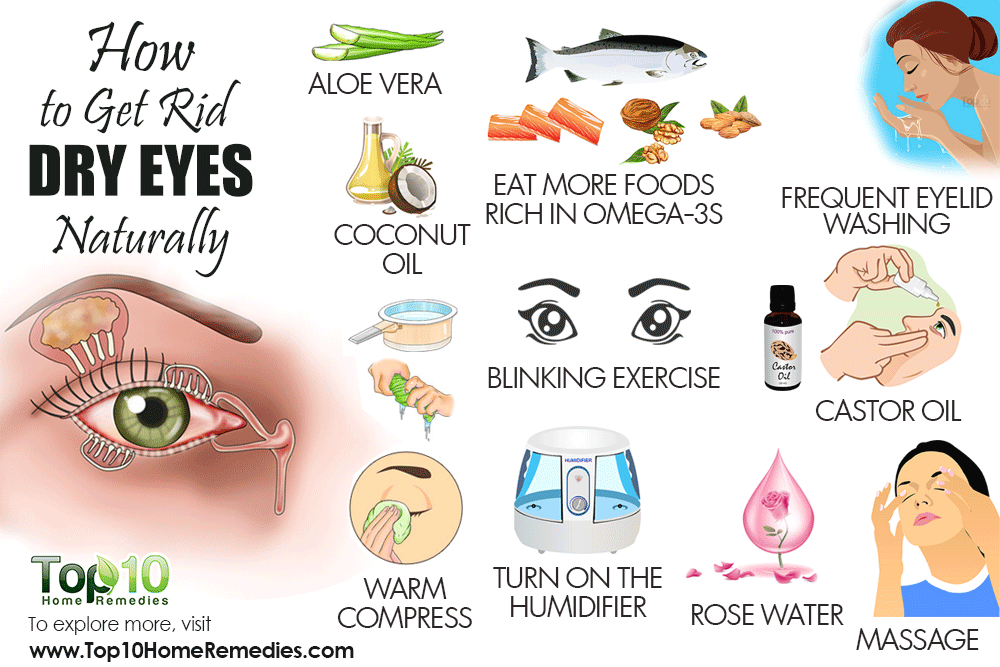 These hernias are a more serious disease in which the appearance of edema on the eyelids can only be considered a harbinger.
These hernias are a more serious disease in which the appearance of edema on the eyelids can only be considered a harbinger.
If you are experiencing eyelid swelling or other eye problems, the best thing to do is seek professional help and do not delay your visit to the doctor. Proper and timely treatment will help to avoid many problems in the future and maintain eye health.
Swollen eyelid emergency
1. First steps
If the eyelid is severely swollen, immediate action is needed to reduce the swelling. First of all, you should apply cold to the swollen area. To do this, you can use a cold compress of ice or frozen vegetables, or simply moisten a gauze pad with cold water and apply to the eye. The skin should not be allowed to freeze.
2. Visiting a doctor
In case of swelling of the eyelid, you should immediately consult an ophthalmologist. He will examine and prescribe the necessary treatment, which may include the use of anti-inflammatory, antibacterial and antihistamines. In some cases, surgery may be required.
In some cases, surgery may be required.
3. Hygiene and care
Follow the rules of hygiene and eye care after consulting a doctor. It is necessary to remove makeup daily and clean the skin around the eyes. With swelling and inflammation, do not use decorative cosmetics and other products that can cause irritation. You should also avoid contact with dirty hands and consult a doctor if the condition worsens.
4. Eyelid swelling prevention
To avoid swelling of the eyelid, you need to monitor your health and avoid the manifestation of allergies. It is also recommended to sleep on your back, use a comfortable pillow and avoid monotonous head positions. Contact with irritants such as tobacco smoke, chemical dusts, etc. should also be avoided.
5. Preventive measures
To prevent recurrence of eyelid swelling, it is necessary to maintain a healthy lifestyle, strengthen immunity, and avoid fatigue and stress. It is recommended to regularly undergo preventive examinations at the ophthalmologist and monitor the health of the eyes.
It is recommended to regularly undergo preventive examinations at the ophthalmologist and monitor the health of the eyes.
What is the diagnosis of a tumor of the eyelid
A tumor of the eyelid can have a different nature and cause. The diagnosis is established after a comprehensive examination of the patient, which includes a visual examination, measurement of visual function, blood tests and other medical procedures.
Furuncle, an inflammation of the hair follicle, is another form of eyelid tumor. This swelling usually goes away on its own, but in some cases it may need to be treated with antibiotics.
More rare causes of eyelid tumors are malignancies such as basal cell carcinoma, secant cell carcinoma, and melanoma. Treatment for these types of tumors may require chemotherapy or radiotherapy.
In any case, if a tumor of the eyelid is detected, it is necessary to consult an ophthalmologist who will determine the nature of the tumor and prescribe the necessary treatment.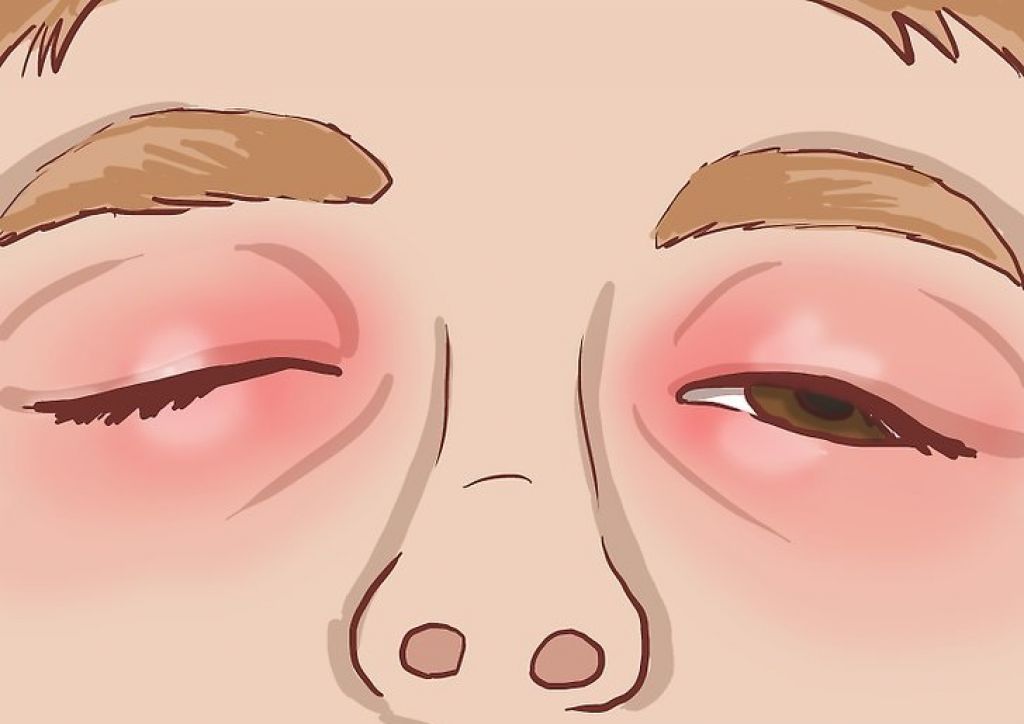
Effective treatments for swollen eyelids
Massage is one of the most effective treatments for swollen eyelids. Regular massage helps reduce swelling and improve blood circulation in the eyelid area. Gentle finger movements should be directed from the inner corner of the eye to the outer one in order to promote the outflow of lymph.
Compresses are another effective treatment for swollen eyelids. To do this, moisten gauze in cold water and apply on the eyelid area for 10-15 minutes. This will reduce swelling and reduce inflammation.
Physiotherapy can help with severe eyelid swelling. Special procedures can improve blood circulation and speed up the removal of toxins from the body. The most effective methods of physiotherapy are ultrasound and electrophoresis.
- Drug treatment can be used for eyelid swelling. The doctor prescribes special ointments, gel products, or drops that can reduce swelling and improve the condition of the skin around the eyelid.

- Surgery may be required when eyelid swelling is due to disease. Surgical treatment can help eliminate the cause of the swelling.
Vitamins play an important role in eliminating swollen eyelids. Vitamins A, C, E and K promote tissue healing, improve blood circulation and strengthen blood vessels. They are found in various foods, such as carrots, cucumbers, beets and eggs.
Minimally Invasive Treatments for Puffy Eyelids
Swollen upper eyelids can be treated with a variety of treatments. One of the most effective is minimally invasive surgery, which provides less tissue trauma and faster recovery.
The most popular minimally invasive methods are botulinum toxin injections, radiofrequency and laser treatments.
- Botulinum toxin injections are a method in which a special agent is injected into the eyelid area that blocks muscle contractions, which helps to eliminate wrinkles and tumors.
- Radiofrequency therapy is a painless method in which high frequency radio waves are sent to the eyelid area, which helps shrink collagen and reduce tissue volume.

- Laser treatment is a method based on the use of a laser beam, which activates the process of skin cell renewal and shrinks the tumor.
The choice of method depends on the type of tumor, its cause and the individual characteristics of the organism. Therefore, before starting treatment, it is important to consult a qualified doctor and choose the best treatment method.
Puffy Eyelid Laser
Puffy Eyelid Laser is an innovative treatment that is used to eliminate swelling in the upper or lower eyelid area. The procedure is carried out with the help of a powerful laser beam, which acts on tissues pointwise, destroying damaged cells and eliminating puffiness. This method of treatment allows to achieve high efficiency and minimal risk to health.
To the benefits of eyelid swollen laser treatment includes no need for surgical intervention, quick recovery after the procedure, as well as the possibility of carrying out the procedure in the clinic without hospitalization and long rehabilitation periods.
After laser treatment of a swollen eyelid, the patient may have a small scar on the eyelid, but it is almost invisible due to the high precision of the laser treatment. In addition, the procedure is accompanied by minimal pain, which is easily eliminated with the help of painkillers.
- Before the procedure, it is necessary to pass all the necessary tests to exclude possible contraindications;
- Laser correction of a swollen eyelid is performed under local anesthesia, which makes the process as comfortable as possible for the patient;
- Multiple sessions may be required for best results;
- After laser treatment of a swollen eyelid, all doctor’s recommendations for the care of a wound on the eyelid must be followed to avoid possible complications.
Other non-surgical treatments for swollen eyelids
If surgery is not a priority for treating swollen eyelids, there are other effective methods that can reduce tissue swelling and eliminate unpleasant symptoms.
- Compresses – A rolled gauze soaked in water or a medicinal solution is applied to the damaged eyelid for several minutes to help relieve puffiness and soothe irritation.
- Eyelid massage – improves blood circulation, promotes the removal of swelling and reduces muscle tension in the eyelids, which reduces the likelihood of re-puffiness.
- Medicines – Medicines such as eye drops, ointments and creams can help reduce swelling and relieve symptoms associated with puffy eyelids, but you should consult your doctor before using them.
It is important to remember that in case of a swollen eyelid caused by an allergic reaction, the cause of the allergy must be corrected in order to avoid recurring bouts of swelling.
Swollen eyelid surgery
Swollen eyelid is an unpleasant cosmetic defect that often occurs in humans, but in some cases may indicate the presence of a disease.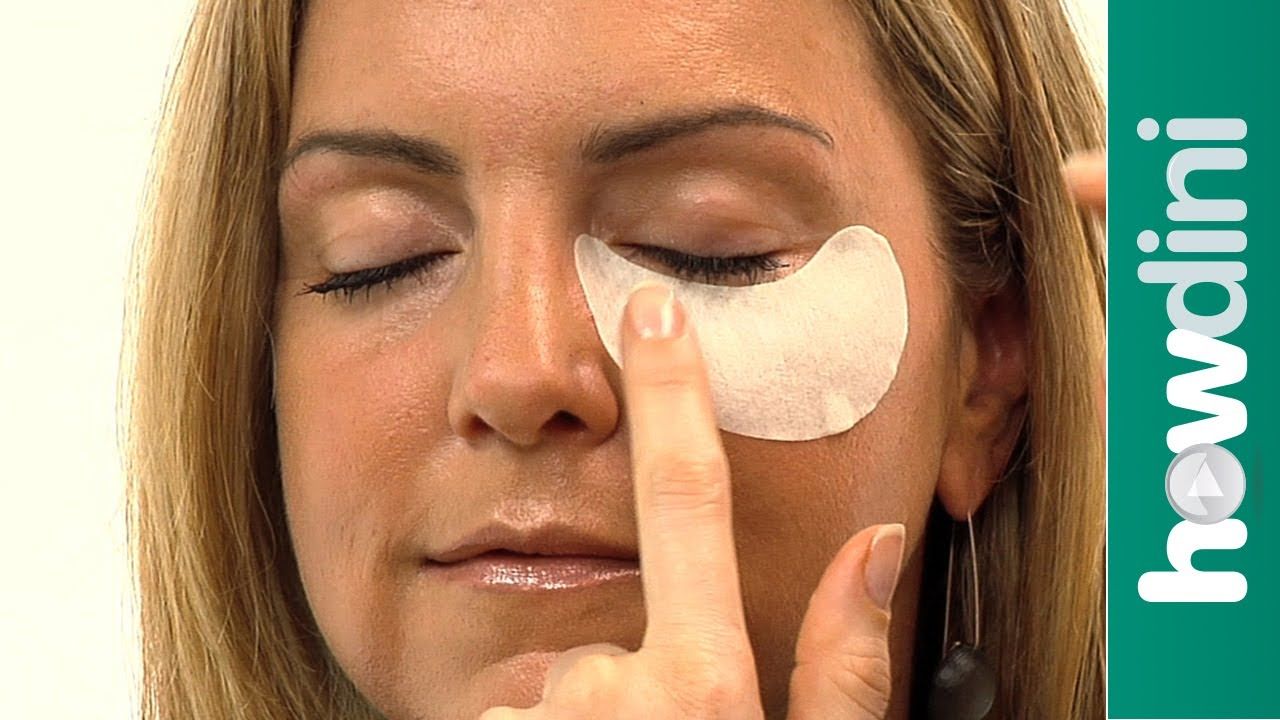 One of the most effective treatments for a swollen eyelid is surgery.
One of the most effective treatments for a swollen eyelid is surgery.
Blepharoplasty is an operation to remove excess skin and fat from the upper and lower eyelids. It allows you to remove ptosis (drooping of the upper eyelid) and fights significant discomfort.
Resection is a treatment that is accompanied by the removal of a hernia on the eyelid. The resection is performed under local anesthesia, and the results are visible immediately after the operation.
Laser Therapy is the latest treatment for swollen eyelids. With the help of a laser beam, it is possible to quickly get rid of excess skin and sponge wrinkles significantly. This method of treatment does not require surgical intervention, therefore it is less traumatic for the body.
The doctor decides which method of treatment is better to choose, based on the degree of development of the disease and its cause. Each patient should be examined prior to these procedures to ascertain the extent of the problem.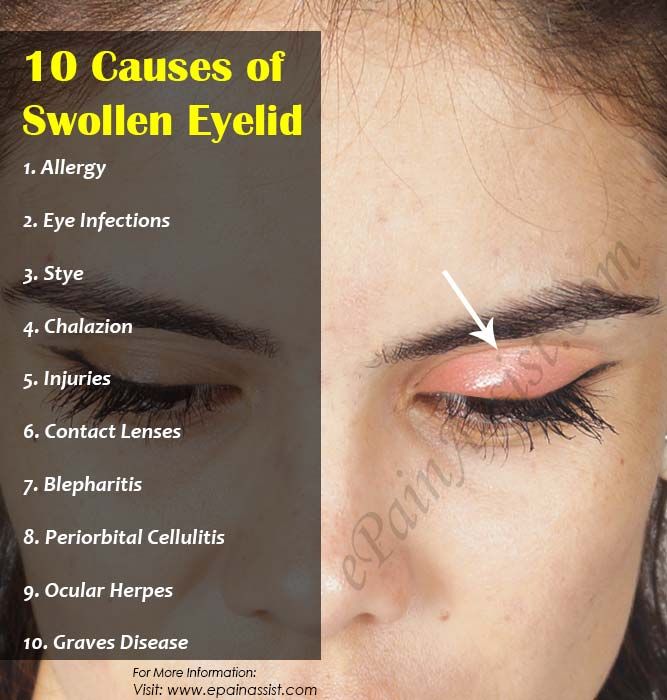
Postoperative period
General recommendations
The postoperative period for the removal of an upper eyelid tumor includes a number of recommendations aimed at a quick and effective recovery. In the first days after the operation, it is necessary to observe bed rest and limit physical activity.
It is important to pay attention to the condition of the suture and avoid infection. Clothing should be loose and not put pressure on the operation site.
Also keep moisture and dirt out of the eye or seam, and wear sunglasses and a hat. It is necessary to follow the doctor’s recommendations for taking medications and be sure to attend the prescribed control appointments.
Analgesia
Postoperative analgesia may be prescribed to relieve pain. It is necessary to follow the recommendations of the doctor and not to exceed the dose of the drug, as well as to avoid the use of alcohol, compatibility with which can be dangerous.
Nutrition
In the postoperative period, it is important to maintain proper nutrition, rich in vitamins and minerals, which will help you recover faster and cope with possible complications.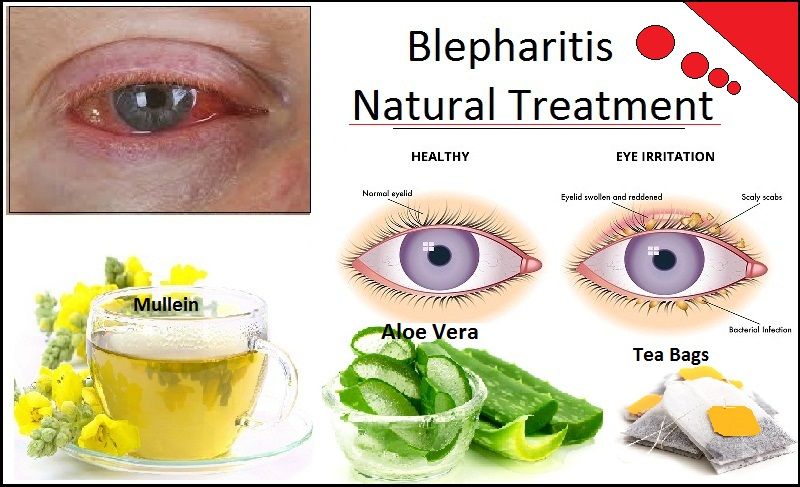 Fatty and heavy foods, as well as strong alcoholic beverages, should be avoided.
Fatty and heavy foods, as well as strong alcoholic beverages, should be avoided.
Eyelid Care Recommendations
Cleanliness: Keeping the skin in this area clean is very important for proper eyelid care. In the morning and evening, it is recommended to wipe it with soft cloths soaked in warm water.
Eye care: When caring for your eyelids, pay special attention to the skin around the eyes. Gentle gel lotions and eye creams will help keep the skin firm, eliminating wrinkles and dark circles.
Make-up features: When applying make-up on the eyelids, use only high-quality cosmetics. After removing makeup, be sure to carry out hygienic treatment of the skin of the eyelids.
Protection: To protect the skin of the eyelids from sunlight, use special creams with a UV protection factor. This will prevent the appearance of melanoma and additional problems in the eye area.
Related videos:
youtube.com/embed/e5w8JwOPygU” frameborder=”0″ allowfullscreen=”allowfullscreen”>
Q&A:
What could be the causes of a swollen eyelid?
Swelling of the eyelid can be caused by a variety of factors, including allergic reactions, infections, trauma, metabolic disorders, and problems with the blood supply to the eye socket. Also one of the most common causes is fatigue or lack of sleep.
How to treat a swollen eyelid?
Treatment for a swollen eyelid depends on its cause. If the swelling is caused by an allergic reaction, then it is necessary to identify the allergen and exclude it from contact with the body. The infection is treated with antibiotics. In case of injury or bruising, painkillers and anti-inflammatory drugs are used. In any case, before starting treatment, you should always consult with your doctor.
Can swollen eyelids be prevented?
To reduce the risk of swollen eyelids, it is recommended to: avoid contact with allergens, avoid fatigue and sleep regularly, take care of your health, remove make-up daily, use eye massage attachments.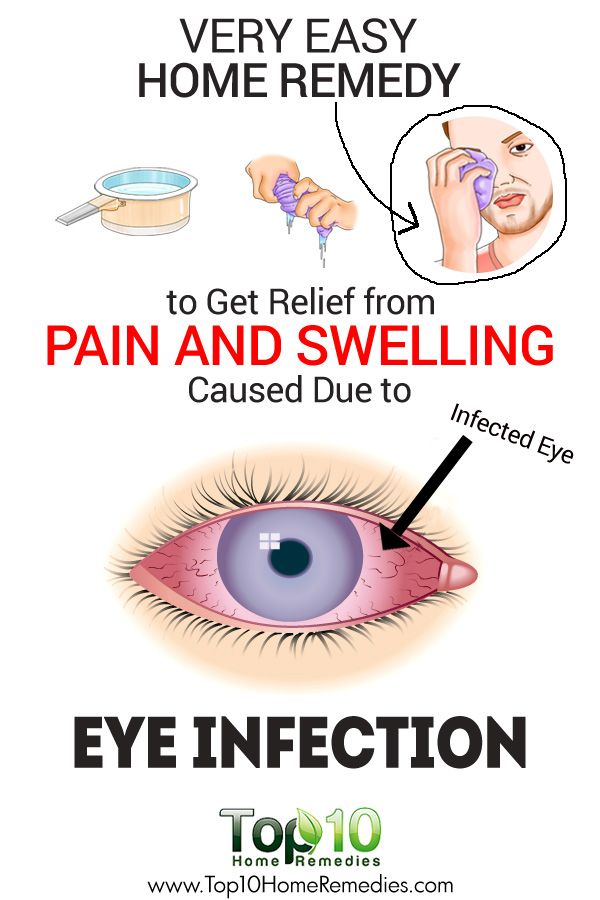

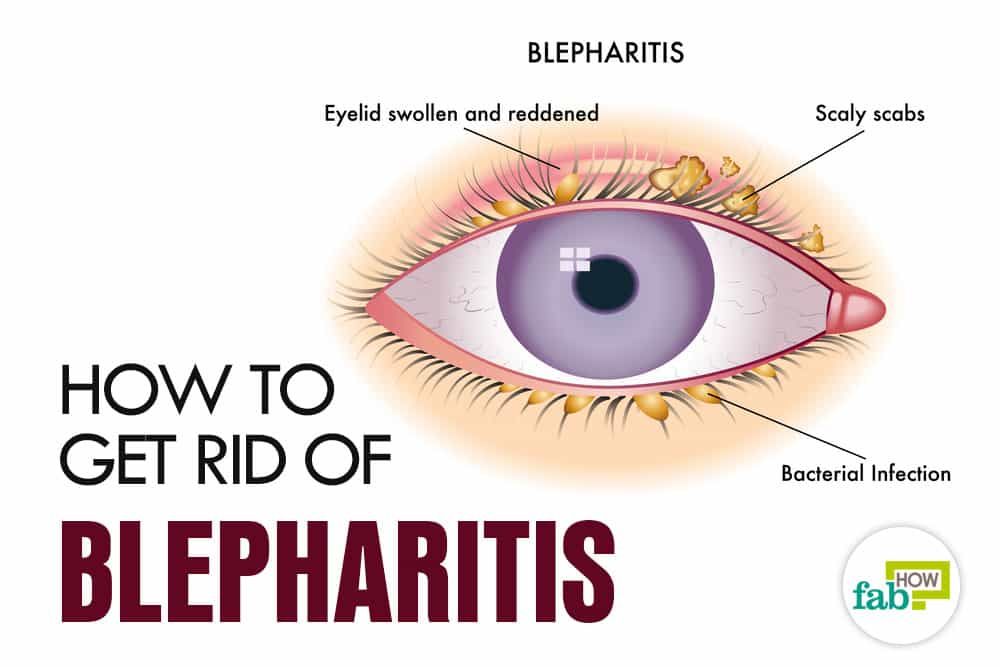 Compresses can be used throughout the day to improve your symptoms.
Compresses can be used throughout the day to improve your symptoms.
 14.0.1 What are the causes of a swollen eyelid?
14.0.1 What are the causes of a swollen eyelid?